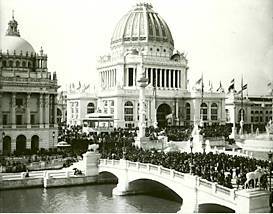Recently, popular YA book blogger Nicole Brinkley put onto the Twitterverse that she would be doing a reread of some of her favorite books during the month of June. She encouraged bibliophiles everywhere, myself included, to join her.
During the month of June, I revisited three of my favorite works: “Ready Player One” by Ernest Cline, “The Devil in the White City” by popular historian Erik Larson, and “Forever” by Pete Hamill. These works are incredible, and like the many people who participated in June Rereads, only fell more deeply in love.
“The Devil in the White City” was one of the books I chose for a reading assignment the summer of my junior year. I had recently decided that I wanted to teach history, and this book was one of the few nonfiction books that was popular history, or history that tends to focus on a narrative of bright personality and vivid details.
The work takes us back to Chicago, just in time for the 1893 World’s Fair made famous by Daniel Burnham, Frederick Olmstead, George Ferris, and Herman Webster Mudgett- or as he’s more commonly known, Dr. H.H. Holmes. Holmes killed a myriad of women, usually fresh, young, blondes looking for work in the Windy City, and took advantage of the fair as a way to lure bright eyed twenty somethings to their deaths. He built a hotel not far from the fairgrounds in Jackson Park complete with a sealed vault, twisting hallways, and a human-sized kiln. Sound macabre? Was it ever. When Holmes’ actions involving the disappearance and death of three children caught the nation’s attention, the rest of his murders were also brought to light and took the nation by storm. Holmes was labeled as America’s first serial killer at a time when the world was still shaking off the likes of Jack the Ripper.
In addition to being a near biography of Holmes, Larson also looks into the construction of the 1893 World’s Fair, and above all, Chicago’s quest for legitimacy. He painstakingly pored through countless archives and letters to put together the best picture possible. The reader quickly gets sucked into the architecture and atmosphere of the World’s Fair and experiences the triumphs and trials along with the members of Burnham’s team.
To put it simply, Larson is the man when it comes to popular history. He’s written a number of bestsellers since his first book in 1992, and two of his works are on my TBR list as we speak. His attention to detail and dedication to accuracy is incredibly admirable, thanks to a career in journalism. His prose is phenomenal, the descriptions of his characters are spot on. In “The Devil in the White City”, Larson weaved in a stunning motif of color as well as constant references to the indulgences of the Gilded Age rich, painting a stark contrast between the haves and the have nots. His descriptions of Chicago are vivid and, at times, a little nauseating as he calls attention to the dirty, smog filled streets, the cruel meatpacking districts, the Midwest heat, and the other problems associated with twentieth century cities.
I would recommend this book, and any book by Erik Larson, to the cerebral and analytical. The book practically begs to be annotated, and the amount of research and care is enough to satisfy any scholar, whether they focus on American history or not. But don’t let the history worry you; the book is an easy read, and thanks to its popular background, it reads like a novel, rather than sounding like a stuffy textbook.
Have you read any of Erik Larson’s books? Sound off in the comments below!




